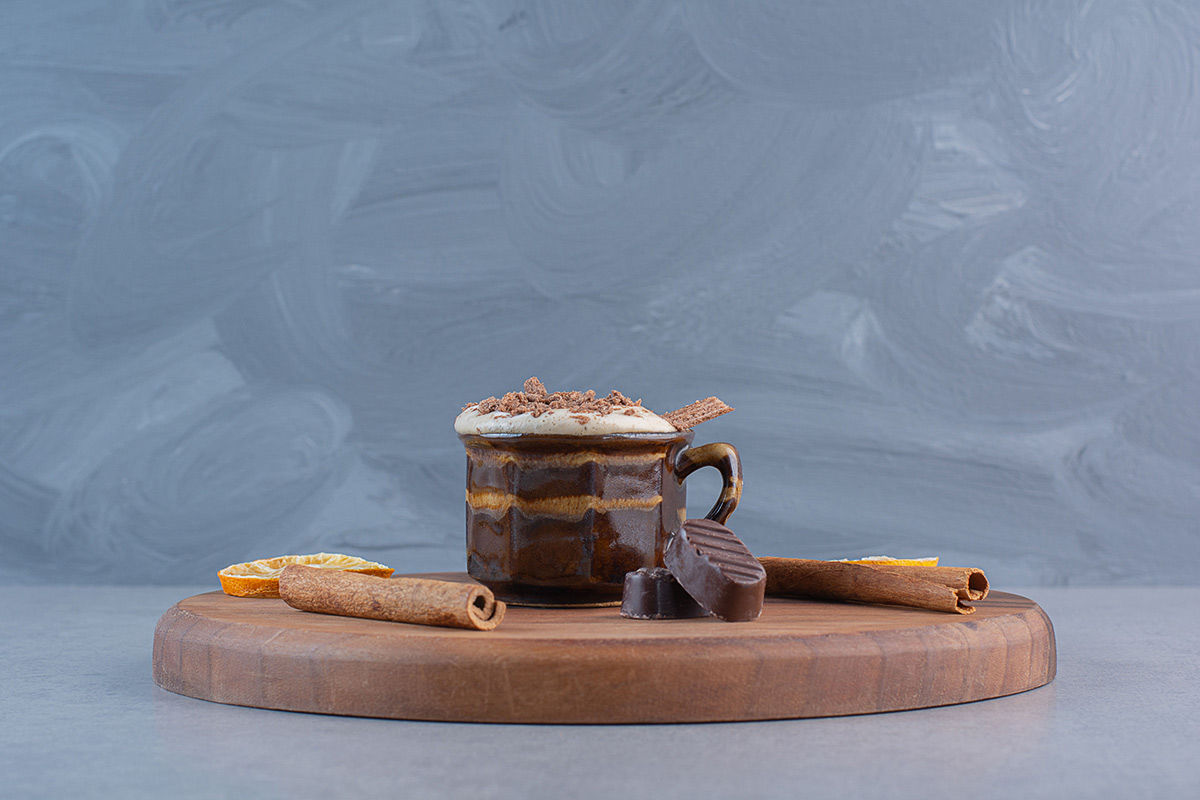Surprise! Eating Dark Chocolate Is a Good Thing
Find out why nutritionists encourage you to eat more dark chocolate
With the holiday season in full swing, there are temptations aplenty. One of them being delicious desserts. If you’re watching your waistline, however, overindulging in treats is probably not ideal. But, that doesn’t mean you have to miss out on all the fun. Enter: dark chocolate. Unlike it’s other chocolate counterparts (we’re looking at you, milk chocolate), dark chocolate is actually chock-full of benefits for your health and your skin.
Keep reading to learn why nutritionists encourage you to eat more dark chocolate and even better, you don’t have to feel guilty anymore!
Benefits of Dark Chocolate
1. Dark chocolate is high in antioxidants
Our bodies need antioxidants to protect cells from free radical damage and dark chocolate is oozing with them. “Dark chocolate has been ranked as one of the best sources of antioxidants,” says lincensed clinical psychologist, certified personal trainer, and certified nutrition coach Dr. Candice Seti, Psy.D., CPT, CNC. “A diet high in antioxidants is credited with everything from preventing disease to slowing the effects of aging.”
2. It’s nutrient dense
“While the antioxidants in dark chocolate are definitely noteworthy, its nutritional prowess does not end there,” Dr. Seti says. “Dark chocolate also provides notable amounts of iron, copper, magnesium, manganese, zinc, fiber, potassium, and more.” In others words, you can snack on dark chocolate guilt free.
3. It’s blood sugar friendly
If regular desserts (cookies, cakes, etc.) don’t make you feel good after eating them, rest assured that dark chocolate won’t have that same effect. “Unlike many other desserts, dark chocolate actually has a relatively low glycemic index (GI) number,” Dr. Seti says. “This means that your blood sugar levels stay stable, thus helping you avoid the energy crashes and inflammation caused by blood sugar spikes.”
4. It aids with better heart health
Dr. Seti tells us that dark chocolate contains flavonoids, which have been shown to reduce LDL (bad) cholesterol and increase HDL (good) cholesterol. And eating dark chocolate has also been linked to a decreased rate of heart disease. “One study showed that consuming dark chocolate five times per week could lower the risk of heart disease by over 50 percent,” she says.
5. It helps lower blood pressure
If you struggle with high blood pressure, you might want to incorporate more dark chocolate into your diet. “Compounds found in dark chocolate also help relax blood vessels,” Dr. Seti says. “This relaxing helps blood to flow better to all parts of the body and decrease blood pressure levels which decreases stress and strain on your veins.”
6. It gives you brain power
If you need a little brain boost (don’t we all?), consider dark chocolate your new BFF. “Dark chocolate has also been shown to help improve brain function,” Dr. Seti says. “Not only does dark chocolate protect brain cells, but the improved blood flow it is responsible for is also a boost to brain power.”
Dark chocolate vs. milk chocolate
Now, before you make a beeline for the grocery store to stock up on chocolate, it’s important to note that these benefits are associated with dark chocolate. Milk chocolate, although it is relatively the same calorise wise, it doesn’t offer the same nutritional and skin-beautifying benefits. Dr. Kelly Bay DC, CNS, CDN, says this is because milk chocolate often has low amounts of cacao, which is the beneficial component of chocolate, and it also contains many additives and sugar.
“Both dark and milk chocolate start from the cocoa beans which are fermented, dried, and roasted,” says Lisa Richards, nutritionist and author of The Candida Diet. “From there they are formed into cocoa nibs and this is where the similarities end. The nibs enter different processing types to form the various varieties, and milk chocolate is the most processed of all. With each processing stage the chocolate moves further away from its antioxidant-rich and nutrient-dense beginnings.” By the time additives, fat, and sugar is added to milk chocolate to give it its signature taste and texture, it contains less than 10 percent cocoa which ultimately provides very little, if any, benefits.
What to look for in a dark chocolate
All that said, not all dark chocolate is created equal. It’s important to look for a high-quality dark chocolate to reap the most benefits. The first thing to look at is the cacao content. “The higher the cocoa content the more antioxidants are still available,” Richards says. Both Richards and Dr. Bay recommend ones with 70% or more cacao content. Dr. Bay also recommends opting for raw cacao if available. “That means the product is minimally processed with more of the compounds promoting health benefits,” she says.
In addition to checking the cacao content, Richards advices getting up close and personal with the ingredient labels and looking for a dark chocolate that doesn’t have sugar as its first listed ingredient. “Sugar is necessary, but some companies add more than others,” she says. Also, make sure there is no milk or trans fat as well.
How much dark chocolate is too much
Although experts do encourage the consumption of dark chocolate, it’s also not ideal to go overboard with it. Like everything else in life, it’s better in moderation. Dr. Bay says that as long as you opt for a dark chocolate with high cacao content and low sugar, you’ll enjoy all the health benefits and avoid the weight gain. But if you’re the type of person that needs the specifics, Richards suggests sticking to one to two ounces of dark chocolate a day (30-60g) so you don’t put on any extra pounds.
So there you go, it’s safe and good for you to indulge in some dark chocolate during the holidays and beyond. Doctors orders.

